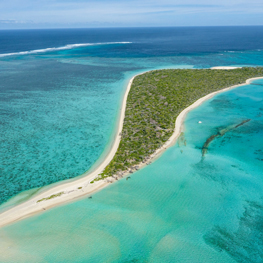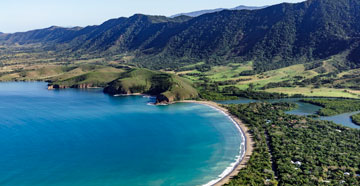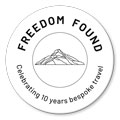With the development of the urban area surrounding Nouméa, the true gateway to the “bush” is now the town of Boulouparis, even though it has long been known as a “country town”! Bush traditions are also honored at the famous annual festival of the Deer and Shrimp.
And speaking of deer, we’ll specify right away how to pronounce this word in the territory! Here, there are “cerfe” (the “f” is pronounced!), and the French pronunciation as “ser” means nothing in Caledonia! And to avoid any other linguistic misunderstandings, make sure that you pronounce the final “s” in Boulouparis (unlike the French pronunciation of “Paris”!).
The inhabitants of the town are called “Boulouparisiens” for men and “Boulouparisiennes” for women, just like its big sister city in France. Note that the surface area of Boulouparis (910 km²) is still bigger than the French capital! This is hardly surprising since Boulouparis is the third biggest town in New Caledonia.
Vast prairies on heavnly islets
Also, there’s no surprise that if you get away from the main road, you’ll first be struck by the enormous plains and vast landscapes of pastures and paperbark savanna. The spectacle of the expanses of grass bending in waves from the sea breeze on the road to Bouraké is also a real pleasure for the eyes. At less than one hour from Nouméa, Boulouparis is definitely a superb location that will satisfy any nature-lover.
As for the sea, the town has lots of pretty islets near the coast, including the very famous islets of Ténia and Puen, where it’s easy to get to aboard a taxi-boat. They take passengers (by reservation) from the wharf at Bouraké.
Back on land, the region is perfect for hiking, with La Dent de Saint Vincent (1,441m), which is possible to climb on foot (2 days round trip) or on horseback.
- Infomation point of Boulouparis
- Opening hours: from Monday to Friday : 7h00 - 15h00
- Telephone: + 687 35 17 06
- Email: mairie.boulouparis@lagoon.nc

- Dumbéa
- La Foa
- Farino
- Moindou
- Bourail
- Koné
- Voh
- Kaala-Gomen
- Koumac
- Poum
- Païta
- Pouembout
- Poya
- Bélep
- Sarraméa
Camp Brun was created in 1876 by the penitentiary administration to detain fourth-class inmates, otherwise known as recalcitrant! Named “Brun” after the former owner of Gratien Brun where the camp was built, held about 150 detainees. Living conditions were very hard. The wardens, who were all unmarried, imposed iron-fisted discipline. Even though they were subjected to forced labor daily, meals were scarce and the convicts had to make do with cement bunks. In 1895, Governor Feillet closed the camp and only rare vestiges survive today.
Discover the must-sees in Boulouparis
Voir plusTénia Islet
Ténia Islet long ago lost its characteristic shape that merited a somewhat unflattering name. Although the currents and tides have redesigned the landscape...
Read moreWhat to do in Boulouparis?
The famous Deer and Shrimp festival!
The towns fame is also based on the annual Deer and Shrimp Festival organized every May. This draws in thousands of enthusiastic visitors to get a taste of the bush atmosphere in Boulouparis!














